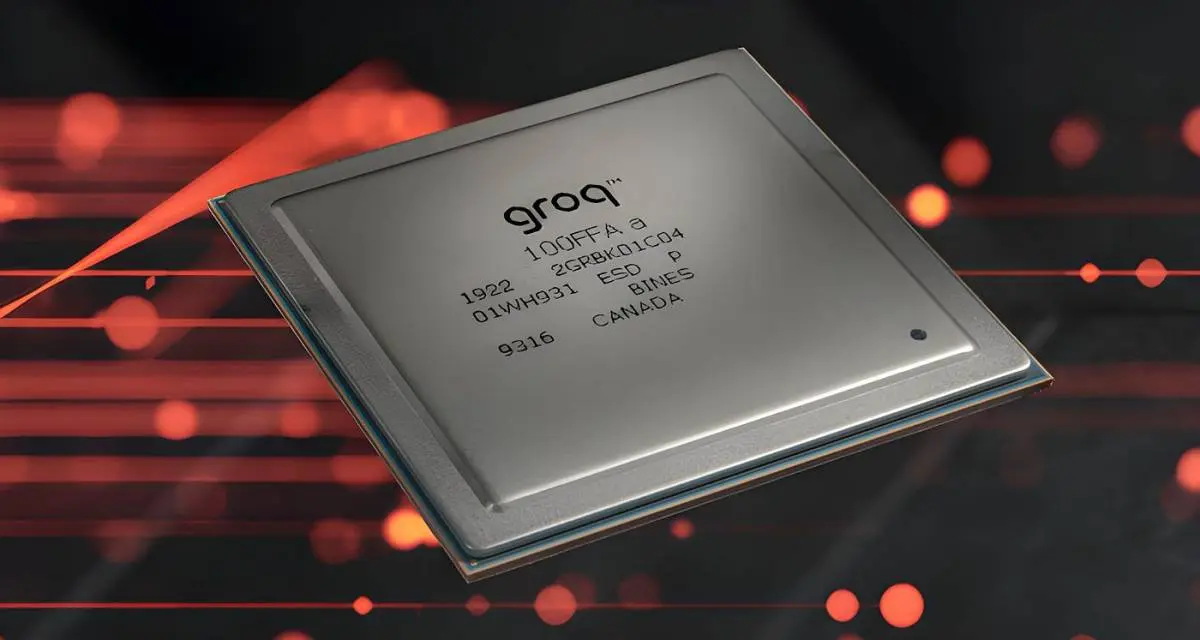Alterego: The 'Near-Telepathic' Wearable Revolutionizing Silent Communication
6 Sources
6 Sources
[1]
This Wearable Isn't Telepathic, but It Knows What You Want to Say
Blake has over a decade of experience writing for the web, with a focus on mobile phones, where he covered the smartphone boom of the 2010s and the broader tech scene. When he's not in front of a keyboard, you'll most likely find him playing video games, watching horror flicks, or hunting down a good churro. Telepathy is, until proven otherwise, still science fiction. But a new wearable announced this week aims to bring the world closer to silent communication, though it's more about using brain signals than the X-Men superpower. Alterego, developed by the MIT Media Lab, is a peripheral neural interface that allows us to converse with machines, artificial intelligence assistants and humans, without using our voice or externally observable movements. We first saw the Alterego as a prototype in 2018. It was a wearable that strapped onto your face from your ear to your chin. Since then, it's become significantly smaller and gained more capabilities. The device works by detecting signals the brain sends out before you speak aloud. Powered by a technology called Silent Sense, the new wearable can detect the full spectrum of speech by its wearer, including when mouthing words or intending to speak. Alterego's generative artificial intelligence then responds, and those communications are sent to the user via a bone-conduction speaker. While it can't capture thought, the company describes Alterego as "the world's first near-telepathic wearable that enables silent communication at the speed of thought." It's not telepathy, but by interpreting your inner voice, it's a step toward speech without speaking. Alterego has an embedded camera system that will allow you to point to something you see and ask about it silently. In a demonstration video, CEO Arnav Kapur circles the face of a character on a postcard, asks who it is (without speaking) and receives a response with the character's details. Don't miss any of our unbiased tech content and lab-based reviews. Add CNET as a preferred Google source. You can also use the wearable to set reminders, control your device hands-free and type, all as fast as you can think. It gets even more interesting when two different people wear the device. You can hold silent conversations with each other, and even have your message translated into another language for the receiver. Since Alterego uses your brain signals and mouth movements to detect what you want to say, communication isn't affected by external sounds or motions. The device could also prove to be a huge medical win, as it can restore speech to those who have lost it due to illness or other impairments. Alterego believes this is just the beginning and that it's "building a future where humans and AI collaborate at the speed of thought, bridging the gap between mind and machine." You can sign up for early access when the wearable is available at alterego.io.
[2]
A new wearable supposedly allows 'silent communication at the speed of thought'
A new startup wants you to believe that the future of communication is already here -- and it looks a lot like strapping a headset to the back of your skull. Alterego, founded by MIT Media Lab alum Arnav Kapur and neurotechnology exec Max Newlon, burst onto the scene this week with a demo of what it calls the "world's first near-telepathic wearable," as Tom's Hardware reports. A bold claim and convincing demonstration If authentic, it holds incredible promise Introducing Alterego: the world’s first near-telepathic wearable that enables silent communication at the speed of thought. Alterego makes AI an extension of the human mind. We’ve made several breakthroughs since our work started at MIT. We’re announcing those today. pic.twitter.com/KX5mxUIBAk -- alterego (@alterego_io) September 8, 2025 Alterego's claim is actually pretty straightforward, if slightly fantastical. The so-called Silent Sense technology is claimed to type at the speed of thought, restore lost or missing speech abilities, enable silent web search, translate across languages, and even hold private conversations without making a sound. It supposedly works by detecting the faint neuromuscular signals your brain sends toward your speech system before words leave your mouth. Importantly, the company stresses it's not reading your raw thoughts, although that assurance probably won't assuage the fears of anyone worried about invasive tech. In the video demo, Kapur shows off "typing" reminders without a keyboard, using the headset's tiny cameras to ask questions about the physical world, and holding a silent chat with his cofounder. There's even a sci-fi moment where Kapur speaks in English while a Mandarin speaker instantly understands him. More than just novel and fascinating, this kind of technology could be an accessibility game-changer. It sounds borderline magical, which might be exactly what leaves some skeptical. For every polished, eye-catching reel promising frictionless human-AI synergy, there's usually a tangle of wires, calibration headaches, and limitations that don't make the cut. The current prototype is still wired, bulky, and conspicuously missing any close-up product shots. And without independent verification, it's impossible to tell whether Alterego's translation trick is real-time sorcery or just carefully staged editing. That's not to say the idea isn't intriguing. A non-invasive wearable that restores speech or enables private communication could be a genuine breakthrough, especially compared to brain-implant approaches like Neuralink. But for now, Silent Sense looks more like a promising concept than a product you'll find at Best Buy anytime soon. Until we see actual hands-on impressions (instead of just the founders demoing to camera) it's best to keep Alterego filed under "interesting, but unproven."
[3]
Exclusive: Startup lets you query AI with silent speech
Why it matters: The technology, from Boston-based AlterEgo, could be broadly useful for, say, working in a crowded cafe -- but it has particular usefulness for those who have lost audible speech, such as those with ALS or multiple sclerosis. * In a demonstration video being posted later today and shared first with Axios, AlterEgo CEO Arnav Kapur shows a prototype device taking notes, querying an AI agent and performing other tasks without the user producing audible sound. How it works: While other brain interfaces focus on reading brain activity, AlterEgo reads the intent to speak by "capturing the downstream information that conducts from cranial nerves to motor units outwards to the device worn around the ear," and uses the bone conduction headset to communicate back to the user. * That makes the technology less invasive in two ways. It doesn't require implantation and it gives users more control over which thoughts to share with the device. * In the demonstration, Kapur showed AlterEgo working both by mouthing words and even just by thinking about mouthing them, with little-to-no visible cue of speech even being intended. * Kapur pioneered his work at MIT and showed an earlier demonstration of the underlying technology at the TED conference in 2019, which Axios chronicled at the time. What they're saying: "Importantly, the hardware has no access to brain data -- this is not EEG or invasive neural recording," Kapur said in a statement to Axios. Yes, but: AlterEgo isn't disclosing the size of the company or its funding, nor when the product will be available. What's next: Kapur will discuss AlterEgo's technology live at our Axios AI+ Summit on Sept. 17 in Washington, D.C.
[4]
'Near Telepathic' Wearable Lets You Communicate Silently With Devices - Decrypt
AlterEgo positions its non-invasive approach as a practical alternative to brain implants like Neuralink or EMG wristbands from Meta. A Boston startup called AlterEgo on Monday unveiled a wearable device that allows users to communicate silently with computers, marking the first serious attempt to commercialize a revolutionary technology pioneered at the MIT Media Lab. The device, described by the company as a "near-telepathic" interface, does not read brain activity. Instead, it detects faint neuromuscular signals in the face and throat when a person internally verbalizes words. Those signals are decoded by machine learning software and transmitted as commands or text. Responses are delivered privately through bone-conduction audio. The approach builds on research first presented at MIT in 2018, when Kapur, then a graduate student, introduced a prototype headset under the same name. That version demonstrated that subvocal speech -- words uttered in silence -- could be captured with sufficient accuracy to control simple systems. The lab positioned it as a potential aid for people with speech impairments, while also suggesting broader applications in human-computer interaction. AlterEgo has not disclosed details about funding, launch timing, or commercialization strategy, but the company will present the technology publicly at the Axios AI+ Summit in Washington, D.C., on Sept. 17. The system draws on several existing strands of research. Electromyography, or EMG, has long been used in prosthetics to capture muscle impulses for controlling artificial limbs; AlterEgo applies the same principle to the muscles involved in speech. The U.S. military supported similar "subvocal speech" experiments in the 2000s, though early prototypes were bulky and inaccurate. Bone-conduction audio, which transmits sound through vibrations in the skull, is a well-established technology in consumer headsets and hearing aids. What sets AlterEgo apart is the integration of these elements into a discreet, wearable package with improved machine learning that can parse silent speech in real time. Unlike invasive brain-computer interfaces such as Neuralink, or non-invasive EEG caps that attempt to interpret brain waves, AlterEgo does not attempt to decode thought directly. It registers only intentional motor signals, a distinction the company emphasizes as a safeguard for user privacy. If successful, the device could reshape how people interact with artificial intelligence systems and connected devices by creating a channel for communication without keyboards, touchscreens or spoken voice. For consumers, it could mean whispering a command to an AI assistant in a crowded room without being overheard. For individuals with speech impairments, it may offer a new way to interact with the world. The company enters a field that is attracting attention from major players. Elon Musk's Neuralink is pursuing invasive brain implants with a focus on medical applications. Meta has explored wristbands that detect EMG signals in the forearm to control augmented-reality systems, while Apple and Google continue to invest in wearable interfaces tied to voice and gesture. AlterEgo's bet is that a lightweight, non-invasive system will prove more practical -- and more acceptable to consumers -- than implants or bulky hardware.
[5]
'First near-telepathic wearable' immediately sends internet into a panic about AI reading minds
TL;DR: Alterego is an AI-powered wearable enabling silent 'near-telepathic' communication. It works not by reading your mind, but by detecting neuromuscular signals that occur before speech is actually spoken. The idea is it can allow for not just silent conversations across, say, a busy office, but also typing by thought. There could also be major uses in terms of accessibility - but question marks remain about exactly how the product works, as it's still in the very early stages of development. The future is here - the "next chapter of human-computer interaction" no less - and it's embodied in an AI-powered headset (of sorts). Tom's Hardware spotted the revelation of Alterego on X by the co-founders of the company Arnav Kapur (CEO) and Max Newlon (COO). As you can see, it's billed as the "world's first near-telepathic wearable that enables silent communication at the speed of thought". The best way to swiftly grasp the concept is to watch the wearable - which is worn on the ears, and rests around the back of the head - in action. The wearer simply thinks and Alterego picks up those thoughts, in a fashion. However, it isn't actually reading your mind - the conclusion a fair few commenters on X (and elsewhere) immediately jumped to. I'll come back to how it works in a moment. The possibilities are rather spectacular, although we can obviously add salt with this staged demo. You can dictate notes to your phone just by 'thinking' them, or type just by thinking - there's no need for a keyboard, virtual or physical. Or you can ask a question about something in your field of vision, getting a response from the AI that powers the wearable - a spoken reply delivered in your ear via a built-in speaker. Most interestingly of all you can communicate 'telepathically' as shown in the demo, and think a sentence which is transmitted to another person also wearing an Alterego - which receives your utterance and plays it back via the speaker. In this way, you can hold a conversation - across a busy office, say - without having to open your mouth. So, how does Alterego work under the hood? The central tech is called 'silent sense' and as the company describes it, the device "passively detects the downstream subtle signals your brain sends to your speech system, before words are spoken aloud". That means all you have to do is think the words as if you're about to verbalize them, and they're picked up by the wearable. The company makes it very clear that Alterego isn't reading your mind in any way, and will only pick up on mouthed words, or the neuromuscular signals in your face that happen when you verbalize words in your head - but don't actually speak them. In terms of accessibility, this could give a voice back to those who aren't capable of speech. This device is still in the early stages of development, of course, and all you can do right now is to sign up for updates on the progress of the wearable at the Alterego website. If anything comes of it, the device presents some intriguing possibilities for the future. Skeptics and doubters Doubters are pouring scorn on the idea, and it's certainly fair enough to be skeptical at this point - all we have is a vague, pre-rehearsed demo. There are questions as to precisely how this reads the signals in your jaw or face, and the extent to which you need to 'form' words physically - if you don't have to actually mouth the words, where exactly are the lines drawn? In the demo, it looks like there's no facial movement at all, although notably, there's some blurring of the footage when the device is processing the user's input. Time will tell if this is being overly hyped, as ever, but it certainly looks promising.
[6]
AlterEgo builds a device that lets you talk to AI without a sound
Boston startup is building technology that captures unspoken words through nerve signals, offering new possibilities for communication and accessibility. Some technologies feel like science fiction until you see them in action. AlterEgo, a Boston startup led by MIT-trained Arnav Kapur, is building one of those. The company has developed a device that lets people issue commands to a computer without making a sound -- essentially, talking in silence. The implications are striking. For people with ALS, multiple sclerosis, or other conditions that rob them of their voice, this could restore a form of spoken agency. For the rest of us, it opens up possibilities too: sending a quick note in a noisy café, asking an AI agent for help in a library, or issuing a discreet command without reaching for a phone. A demo video shows Kapur wearing the prototype. He takes notes and queries an AI assistant without uttering a word. The device reads tiny signals from cranial nerves that normally trigger speech muscles, then routes responses back through bone conduction -- a simple ear-worn interface, not a brain implant. That design matters. As Kapur points out, "the hardware has no access to brain data." This is not about mind reading; it's about intercepting speech at the edge of expression. Even mouthing words is optional -- the system works when you only think about mouthing them. Kapur first showed an early version of this system at TED in 2019. Now AlterEgo is preparing to reveal more at the Axios AI+ Summit on September 17 in Washington, D.C. What we don't know yet is when this might reach the market or how the company is funded. Still, the idea lingers: maybe the future of human-computer interaction isn't louder or flashier, but quieter -- even invisible.
Share
Share
Copy Link
Alterego, a startup founded by MIT Media Lab alum Arnav Kapur, unveils a groundbreaking wearable device that enables silent communication through neuromuscular signal detection, promising to transform human-computer interaction and accessibility.
The Rise of 'Near-Telepathic' Communication
Alterego, a Boston-based startup, has unveiled what it calls the 'world's first near-telepathic wearable' that promises to revolutionize human-computer interaction and silent communication
1
2
3
. Founded by MIT Media Lab alum Arnav Kapur and neurotechnology executive Max Newlon, Alterego's device builds upon years of research and development in neural interfaces2
4
.
Source: TweakTown
How Alterego Works
The Alterego wearable utilizes a technology called Silent Sense, which detects subtle neuromuscular signals sent by the brain to the speech system before words are spoken aloud
1
3
. Unlike invasive brain-computer interfaces or EEG systems, Alterego doesn't read brain activity directly. Instead, it captures the 'downstream information that conducts from cranial nerves to motor units outwards to the device worn around the ear'3
4
.
Source: Axios
The device, which wraps around the back of the head and ears, uses machine learning algorithms to interpret these signals and convert them into text or commands
2
4
. Responses are then delivered to the user via a bone-conduction speaker, ensuring private communication1
4
.Key Features and Applications
Alterego's capabilities extend beyond simple silent communication:
- Typing and note-taking at the speed of thought
- Silent web searches and AI interactions
- Language translation in real-time
- Private conversations between two Alterego users
- Hands-free device control
- Accessibility aid for those with speech impairments
1
2
3
4

Source: Decrypt
Related Stories
Potential Impact and Challenges
The introduction of Alterego could significantly impact various fields:
- Accessibility: The device could restore communication abilities to individuals with conditions like ALS or multiple sclerosis
3
. - Workplace Communication: Silent conversations in busy environments could revolutionize office dynamics
4
. - Human-AI Interaction: Alterego positions itself as a bridge between human thought and AI systems
1
4
.
However, the technology also raises questions and challenges:
- Privacy Concerns: Despite assurances that the device doesn't read thoughts directly, some remain skeptical about potential privacy implications
5
. - Technical Limitations: The current prototype is still wired and bulky, and there are questions about its real-world performance
2
. - Market Positioning: Alterego enters a field with competition from major players like Neuralink, Meta, Apple, and Google, each exploring different approaches to neural interfaces
4
.
The Road Ahead
While Alterego's demonstration has generated significant interest, the company has not disclosed details about funding, launch timing, or commercialization strategy
3
4
. The technology is still in its early stages, and independent verification of its capabilities is pending2
5
.As Alterego continues to develop its product, it positions its non-invasive approach as a practical alternative to brain implants and other more invasive technologies
4
. The coming months will be crucial in determining whether this 'near-telepathic' wearable can live up to its bold promises and truly usher in a new era of human-computer interaction.References
Summarized by
Navi
Related Stories
Brain Implant Decodes Inner Speech with Password Protection, Advancing AI-Powered Communication
15 Aug 2025•Science and Research

Meta's AI Breakthrough: Decoding Brain Signals into Text with 80% Accuracy
10 Feb 2025•Science and Research

Omi AI Unveils Wearable AI Companion with Future Brain-Reading Capabilities at CES 2025
09 Jan 2025•Technology

Recent Highlights
1
Nvidia acquires AI chip startup Groq for $20 billion in largest deal ever
Technology

2
Chinese AI Models Close Gap With US Systems as Open-Source Strategy Reshapes Global Tech Order
Policy and Regulation

3
Samsung unveils Exynos 2600, world's first 2nm smartphone chip set to power Galaxy S26 series
Technology





